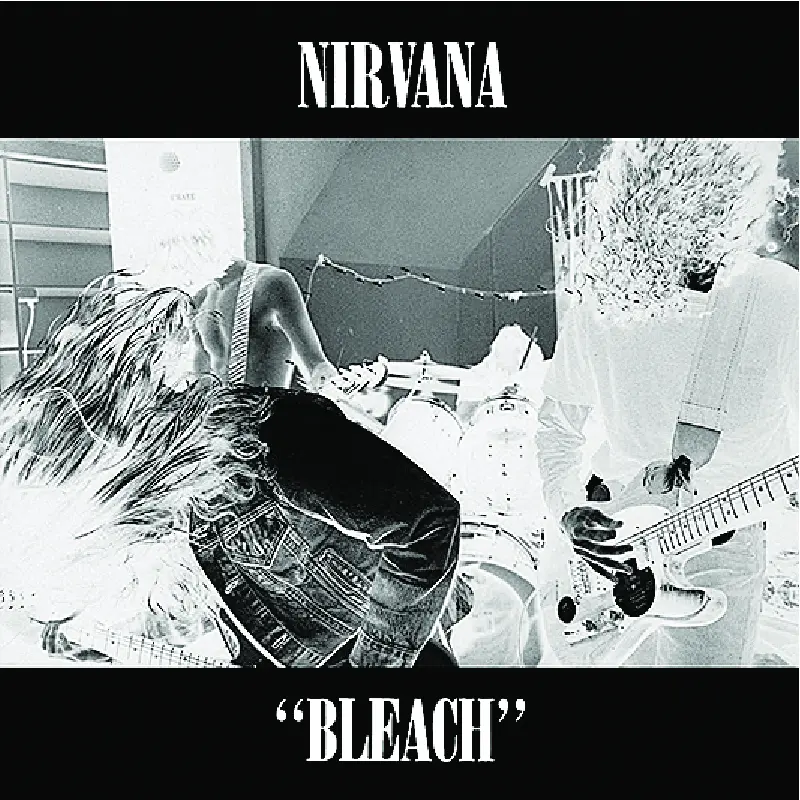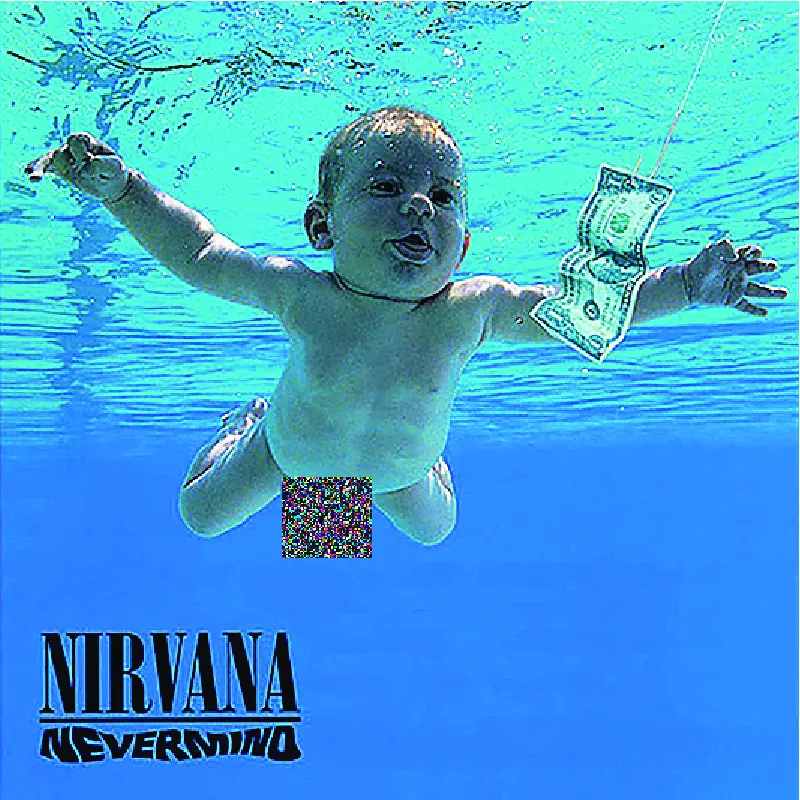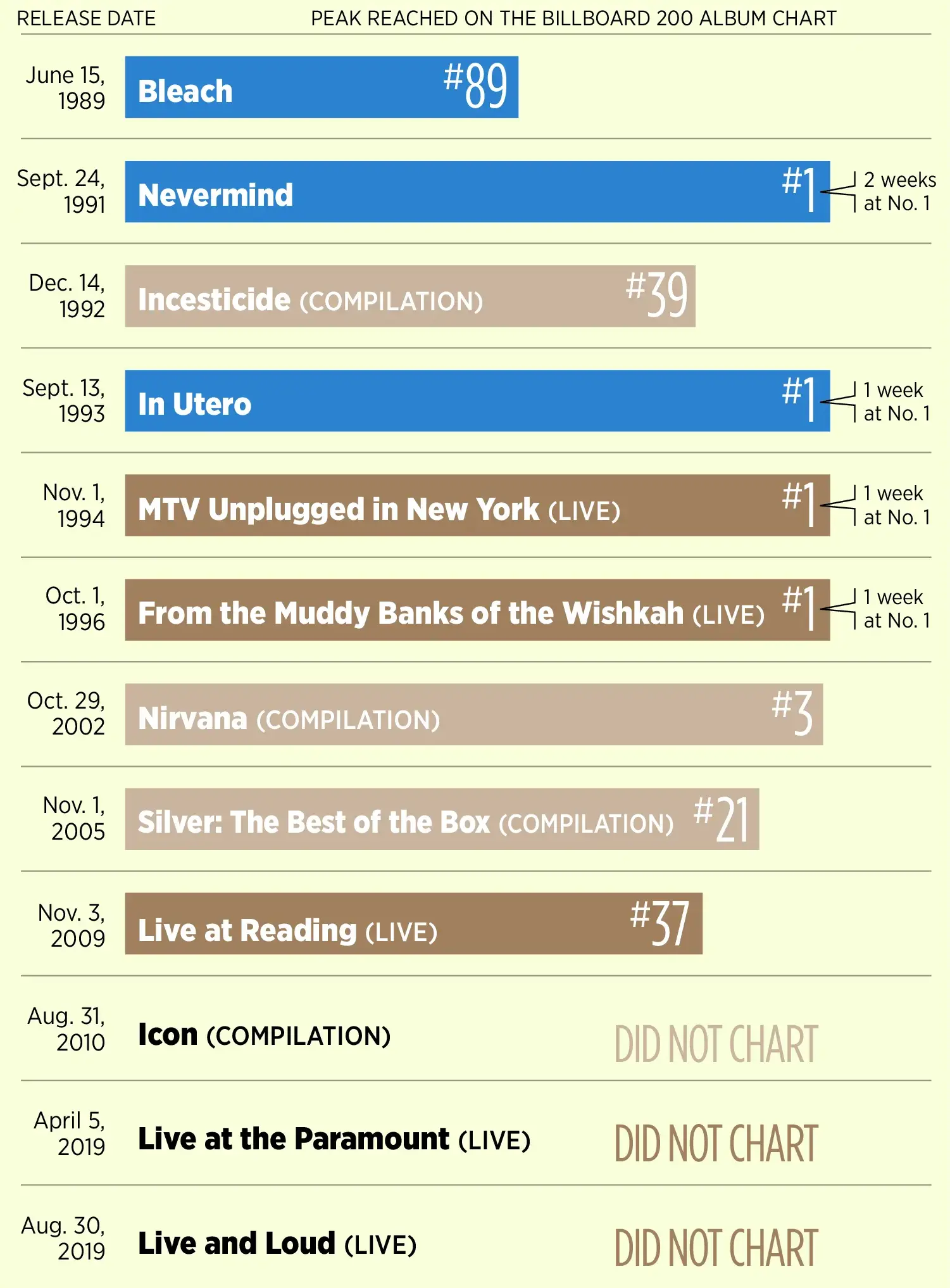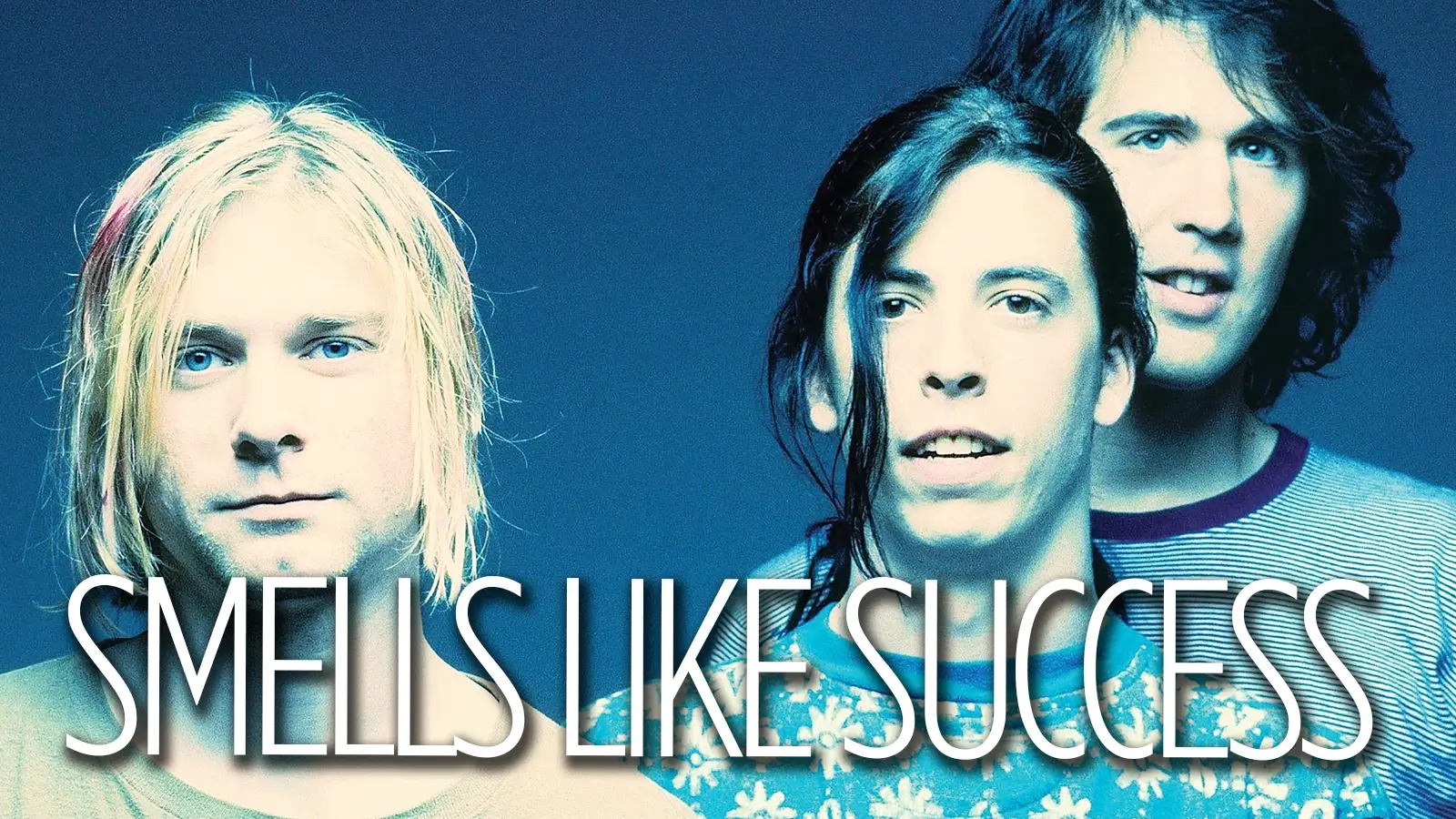In 1993, the trio that made up Seattle-based grunge-rock band Nirvana found themselves at a crossroads. They had found tremendous commercial success with their second album, “Nevermind,” selling more than 30 million copies worldwide.
So lead singer and guitarist Kurt Cobain, bass player Krist Novoselic and drummer Dave Grohl decided to go in an entirely different, even “anti-commercial,” direction with their third album.
“In Utero” was released 30 years ago Thursday. It would go on to be yet another huge commercial success.
Nirvana's Three Studio Albums

Released in 1989 on the small independent label, Sub Pop, “Bleach” sold only 40,000 copies and did not register on the Billboard 200 album chart. It was held in high regard, however, by college radio stations
After the success of “Nevermind,” a re-released “Bleach” would sell more than 1.9 million copies in the U.S. and peak at No. 89 on the Billboard 200
The drummer for Nirvana at the time was Chad Channing. Only after the release of “Bleach” was he replaced by Dave Grohl.

In September 1991, things got really crazy for Nirvana. Its new label, DGC, had pressed only 50,000 copies of the band's second album but those sold out in only two days.
A single from the album, “Smells Like Teen Spirit,” hit No. 6 on the Billboard Hot 100 singles chart. By Christmas, the album was selling 400,000 copies a week.
Never mind the nude infant on the front cover: Nevermind would go on to become one of the highest-selling albums of all time and would earn three Grammy Award nominations.
By January 1992, “Nevermind” had surpassed Michael Jackson's “Dangerous” as the world's top-selling album.
But such commercial success was a double-edged sword for Nirvana and especially for the band's angst-driven leader, Kurt Cobain. He aspired to be an independent voice in the part-punk, part-metal world of grunge rock. Instead, he found himself a multimillionaire and hailed as the voice of his generation.
How does one respond to sudden success like that? Cobain took the band in what he considered to be the opposite, noncommerical direction. And he paid the price for that.
Nirvana's Album Chart History

The band took much of 1992 off. Cobain got married and his wife, Courtney Love, had their baby. Craving something to sell for the holiday season, DGC Records issued a greatest hits set that peaked at No. 39 and spent a half-year on the album charts.
With the start of 1993, it was time for Nirvana's next move. The band's wish: to regain the credibility they reckoned they had lost with the success of “Nevermind.” They set out to create the most noncommercial music they could make, recombining punk and pop in new, inventive ways.
To make this happen, Nirvana rushed the recording out in just 14 days in February 1993. “It'll be more raw with some songs and more candy pop on some of the others,” Cobain told Rolling Stone before the album's release. “It won't be as one-dimensional (as “Nevermind” had been.)”
But the label pushed back, calling the songs too raw and unpolished. At one point, the label threatened to not release In Utero at all. R.E.M. producer Scott Litt was called in to remix two songs. One Cobain composition he had named “I Hate Myself and Want to Die” was deleted.
“In Utero” was released on Sept. 21, 1993. It sold 180,000 copies in its first week of release and debuted at No. 1 on the Billboard 200 album chart. This success came despite the fact that Walmart, K-Mart and a number of other retailers declined to stock the album, given the sexual content of the back cover illustration and the title of one song: “Rape Me.”
“In Utero” would go on to sell 5 million copies in the U.S. and 15 million copies worldwide.
In March 1994, Cobain would attempt to kill himself with an overdose of medication. A month after that, he would try again with a shotgun, He died at age 27.
